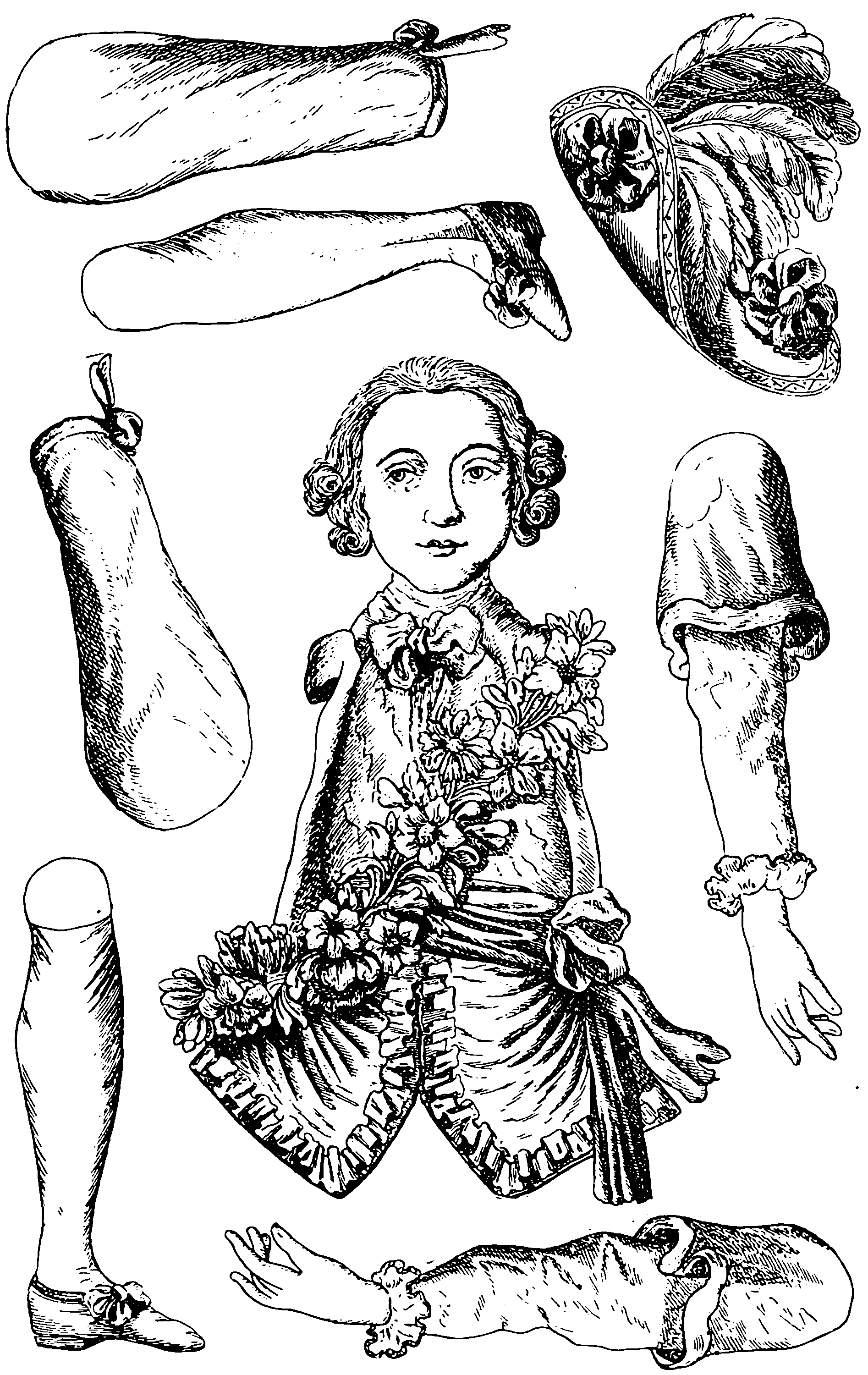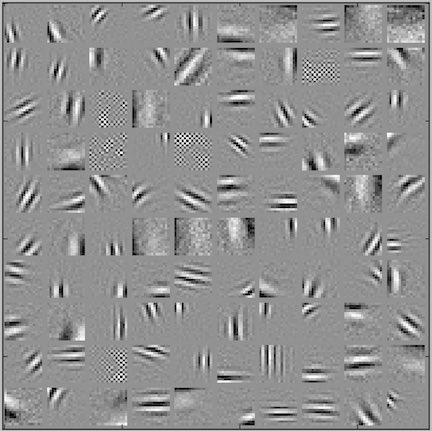Arora, Ge, Ma, et al. 2015.
“Simple, Efficient, and Neural Algorithms for Sparse Coding.” In
Proceedings of The 28th Conference on Learning Theory.
Baraniuk, Cevher, Duarte, et al. 2010.
“Model-Based Compressive Sensing.” IEEE Transactions on Information Theory.
Barron, Cohen, Dahmen, et al. 2008.
“Approximation and Learning by Greedy Algorithms.” The Annals of Statistics.
Barthélemy, Larue, Mayoue, et al. 2012.
“Shift & 2D Rotation Invariant Sparse Coding for Multivariate Signals.” IEEE Transactions on Signal Processing.
Bertin, Pennec, and Rivoirard. 2011.
“Adaptive Dantzig Density Estimation.” Annales de l’Institut Henri Poincaré, Probabilités Et Statistiques.
Beylkin, Coifman, and Rokhlin. 1991.
“Fast Wavelet Transforms and Numerical Algorithms I.” Communications on Pure and Applied Mathematics.
Blumensath, and Davies. 2004.
“On Shift-Invariant Sparse Coding.” In
Independent Component Analysis and Blind Signal Separation.
———. 2006.
“Sparse and Shift-Invariant Representations of Music.” IEEE Transactions on Audio, Speech and Language Processing.
Bora, Jalal, Price, et al. 2017.
“Compressed Sensing Using Generative Models.” In
International Conference on Machine Learning.
Bruna, and Mallat. 2013.
“Invariant Scattering Convolution Networks.” IEEE Transactions on Pattern Analysis and Machine Intelligence.
———. 2019.
“Multiscale Sparse Microcanonical Models.” arXiv:1801.02013 [Math-Ph, Stat].
Bruna, Mallat, Bacry, et al. 2015.
“Intermittent Process Analysis with Scattering Moments.” The Annals of Statistics.
Cai, Chan, and Shen. 2008.
“A Framelet-Based Image Inpainting Algorithm.” Applied and Computational Harmonic Analysis, Special Issue on Mathematical Imaging – Part II,.
Carabias-Orti, Virtanen, Vera-Candeas, et al. 2011.
“Musical Instrument Sound Multi-Excitation Model for Non-Negative Spectrogram Factorization.” IEEE Journal of Selected Topics in Signal Processing.
Casazza, and Lynch. 2015.
“A Brief Introduction to Hilbert Space Frame Theory and Its Applications.” In
Finite Frame Theory: A Complete Introduction to Overcompleteness.
Chen, and Donoho. 1994.
“Basis Pursuit.” In
1994 Conference Record of the Twenty-Eighth Asilomar Conference on Signals, Systems and Computers, 1994.
Cox, and Rogers. 2021.
“Finding Distributed Needles in Neural Haystacks.” Journal of Neuroscience.
Daubechies, Ingrid. 1988.
“Orthonormal Bases of Compactly Supported Wavelets.” Communications on Pure and Applied Mathematics.
Daubechies, I., Defrise, and De Mol. 2004.
“An Iterative Thresholding Algorithm for Linear Inverse Problems with a Sparsity Constraint.” Communications on Pure and Applied Mathematics.
Daubechies, Ingrid, Han, Ron, et al. 2003.
“Framelets: MRA-Based Constructions of Wavelet Frames.” Applied and Computational Harmonic Analysis.
Davis, Geoffrey M. 1998.
“A Wavelet-Based Analysis of Fractal Image Compression.” IEEE Transactions on Image Processing.
Davis, G., Mallat, and Avellaneda. 1997.
“Adaptive Greedy Approximations.” Constructive Approximation.
Davis, Geoffrey M., Mallat, and Zhang. 1994a.
“Adaptive Time-Frequency Decompositions.” Optical Engineering.
DeVore. 1998.
“Nonlinear Approximation.” Acta Numerica.
Donoho, and Johnstone. 1995.
“Adapting to Unknown Smoothness via Wavelet Shrinkage.” Journal of the American Statistical Association.
Donoho, Johnstone, Kerkyacharian, et al. 1995.
“Wavelet Shrinkage: Asymptopia?” Journal of the Royal Statistical Society. Series B (Methodological).
Eggert, and Korner. 2004.
“Sparse Coding and NMF.” In
2004 IEEE International Joint Conference on Neural Networks (IEEE Cat. No.04CH37541).
Ekanadham, Tranchina, and Simoncelli. 2011.
“Recovery of Sparse Translation-Invariant Signals With Continuous Basis Pursuit.” IEEE Transactions on Signal Processing.
Frazier. 1999. An Introduction to Wavelets Through Linear Algebra.
Gersho, and Gray. 2012. Vector Quantization and Signal Compression.
Goodwin, M M. 2001.
“Multiscale Overlap-Add Sinusoidal Modeling Using Matching Pursuit and Refinements.” In
IEEE Workshop on Applications of Signal Processing to Audio and Acoustics.
Goodwin, M., and Vetterli. 1997.
“Atomic Decompositions of Audio Signals.” In
1997 IEEE ASSP Workshop on Applications of Signal Processing to Audio and Acoustics, 1997.
Goodwin, M M, and Vetterli. 1999.
“Matching Pursuit and Atomic Signal Models Based on Recursive Filter Banks.” IEEE Transactions on Signal Processing.
Gray. 1984.
“Vector Quantization.” IEEE ASSP Magazine.
Gregor, and LeCun. 2010.
“Learning fast approximations of sparse coding.” In
Proceedings of the 27th International Conference on Machine Learning (ICML-10).
Grosse, Raina, Kwong, et al. 2007.
“Shift-Invariant Sparse Coding for Audio Classification.” In
The Twenty-Third Conference on Uncertainty in Artificial Intelligence (UAI2007).
Han, Bin, Zhao, and Zhuang. 2016.
“Directional Tensor Product Complex Tight Framelets with Low Redundancy.” Applied and Computational Harmonic Analysis, Sparse Representations with Applications in Imaging Science, Data Analysis, and Beyond, Part IISI: ICCHAS Outgrowth, part 2,.
Han, Bin, and Zhuang. 2015.
“Smooth Affine Shear Tight Frames with MRA Structure.” Applied and Computational Harmonic Analysis.
Harte, Sandler, and Gasser. 2006.
“Detecting Harmonic Change in Musical Audio.” In
Proceedings of the 1st ACM Workshop on Audio and Music Computing Multimedia. AMCMM ’06.
Hoyer, Patrik O. n.d.
“Non-Negative Matrix Factorization with Sparseness Constraints.” Journal of Machine Learning Research.
Hoyer, P.O. 2002.
“Non-Negative Sparse Coding.” In
Proceedings of the 2002 12th IEEE Workshop on Neural Networks for Signal Processing, 2002.
Jafari, and Plumbley. 2011.
“Fast Dictionary Learning for Sparse Representations of Speech Signals.” IEEE Journal of Selected Topics in Signal Processing.
Jaillet, Gribonval, Plumbley, et al. 2010.
“An L1 Criterion for Dictionary Learning by Subspace Identification.” In
2010 IEEE International Conference on Acoustics, Speech and Signal Processing.
Jung. 2013.
“An RKHS Approach to Estimation with Sparsity Constraints.” In
Advances in Neural Information Processing Systems 29.
Lattner, Dorfler, and Arzt. 2019.
“Learning Complex Basis Functions for Invariant Representations of Audio.” In
Proceedings of the 20th Conference of the International Society for Music Information Retrieval.
Lee, Wee Sun, Bartlett, and Williamson. 1996.
“Efficient Agnostic Learning of Neural Networks with Bounded Fan-in.” IEEE Transactions on Information Theory.
Lee, Honglak, Battle, Raina, et al. 2007.
“Efficient Sparse Coding Algorithms.” Advances in Neural Information Processing Systems.
Lewicki, Michael S., and Sejnowski. 2000.
“Learning Overcomplete Representations.” Neural Computation.
Mailhé, Gribonval, Vandergheynst, et al. 2011.
“Fast Orthogonal Sparse Approximation Algorithms over Local Dictionaries.” Signal Processing, Advances in Multirate Filter Bank Structures and Multiscale Representations,.
Mairal, Bach, Ponce, et al. 2009.
“Online Dictionary Learning for Sparse Coding.” In
Proceedings of the 26th Annual International Conference on Machine Learning. ICML ’09.
———, et al. 2010.
“Online Learning for Matrix Factorization and Sparse Coding.” The Journal of Machine Learning Research.
Mallat, Stephane G. 1989.
“Multiresolution Approximations and Wavelet Orthonormal Bases of L²(R).” Transactions of the American Mathematical Society.
Mallat, Stéphane. 2008. A Wavelet Tour of Signal Processing: The Sparse Way.
———. 2012.
“Group Invariant Scattering.” Communications on Pure and Applied Mathematics.
Mallat, S., and Zhang. 1992.
“Adaptive Time-Frequency Decomposition with Matching Pursuits.” In
Time-Frequency and Time-Scale Analysis, 1992., Proceedings of the IEEE-SP International Symposium.
Mallat, Stéphane G., and Zhang. 1993.
“Matching Pursuits with Time-Frequency Dictionaries.” IEEE Transactions on Signal Processing.
Marcus, Marblestone, and Dean. 2014.
“The atoms of neural computation.” Science.
Mondal, and Percival. 2010.
“M-Estimation of Wavelet Variance.” Annals of the Institute of Statistical Mathematics.
Mørup, Schmidt, and Hansen. 2007.
“Shift Invariant Sparse Coding of Image and Music Data.” Journal of Machine Learning Research.
Ngiam, Chen, Bhaskar, et al. 2011.
“Sparse Filtering.” In
Advances in Neural Information Processing Systems 24.
Olshausen, B. A., and Field. 1996.
“Natural image statistics and efficient coding.” Network (Bristol, England).
Olshausen, Bruno A, and Field. 2004.
“Sparse Coding of Sensory Inputs.” Current Opinion in Neurobiology.
Opsomer, Wang, and Yang. 2001.
“Nonparametric Regression with Correlated Errors.” Statistical Science.
Oyallon, Belilovsky, and Zagoruyko. 2017.
“Scaling the Scattering Transform: Deep Hybrid Networks.” arXiv Preprint arXiv:1703.08961.
Plumbley, Abdallah, Blumensath, et al. 2006.
“Sparse Representations of Polyphonic Music.” Signal Processing, Sparse Approximations in Signal and Image ProcessingSparse Approximations in Signal and Image Processing,.
Rubinstein, Bruckstein, and Elad. 2010.
“Dictionaries for Sparse Representation Modeling.” Proceedings of the IEEE.
Schniter, Potter, and Ziniel. 2008.
“Fast Bayesian Matching Pursuit.” In
2008 Information Theory and Applications Workshop.
Simoncelli, and Olshausen. 2001.
“Natural Image Statistics and Neural Representation.” Annual Review of Neuroscience.
Smith, and Lewicki. 2006.
“Efficient Auditory Coding.” Nature.
Sulam, Aberdam, Beck, et al. 2020.
“On Multi-Layer Basis Pursuit, Efficient Algorithms and Convolutional Neural Networks.” IEEE Transactions on Pattern Analysis and Machine Intelligence.
Tang. 2000. Wavelet Theory and Its Application to Pattern Recognition.
Torrence, and Compo. 1998.
“A Practical Guide to Wavelet Analysis.” Bulletin of the American Meteorological Society.
Tropp, Joel A. 2006.
“Algorithms for Simultaneous Sparse Approximation. Part II: Convex Relaxation.” Signal Processing, Sparse Approximations in Signal and Image ProcessingSparse Approximations in Signal and Image Processing,.
Tropp, Joel A., Gilbert, and Strauss. 2006.
“Algorithms for Simultaneous Sparse Approximation. Part I: Greedy Pursuit.” Signal Processing, Sparse Approximations in Signal and Image ProcessingSparse Approximations in Signal and Image Processing,.
Tsaig, and Donoho. 2006a.
“Breakdown of Equivalence Between the Minimal -Norm Solution and the Sparsest Solution.” Signal Processing, Sparse Approximations in Signal and Image ProcessingSparse Approximations in Signal and Image Processing,.
———. 2006b.
“Extensions of Compressed Sensing.” Signal Processing, Sparse Approximations in Signal and Image ProcessingSparse Approximations in Signal and Image Processing,.
Vainsencher, Mannor, and Bruckstein. 2011.
“The Sample Complexity of Dictionary Learning.” Journal of Machine Learning Research.
Wang, Yu-Xiang, Smola, and Tibshirani. 2014.
“The Falling Factorial Basis and Its Statistical Applications.” In
Proceedings of the 31st International Conference on International Conference on Machine Learning - Volume 32. ICML’14.
Wang, Yu Guang, and Zhuang. 2016.
“Tight Framelets and Fast Framelet Transforms on Manifolds.” arXiv:1608.04026 [Math].
Weidmann, and Vetterli. 2012.
“Rate Distortion Behavior of Sparse Sources.” IEEE Transactions on Information Theory.
Wohlberg. 2017. “SPORCO: A Python Package for Standard and Convolutional Sparse Representations.” In.
Yaghoobi, Daudet, and Davies. 2009.
“Parametric Dictionary Design for Sparse Coding.” IEEE Transactions on Signal Processing.
Yaghoobi, Nam, Gribonval, et al. 2013.
“Constrained Overcomplete Analysis Operator Learning for Cosparse Signal Modelling.” IEEE Transactions on Signal Processing.
Yuan, Li, and Zhang. 2014.
“Gradient Hard Thresholding Pursuit for Sparsity-Constrained Optimization.” In
Proceedings of the 31st International Conference on International Conference on Machine Learning - Volume 32.
Zhou, Chen, Paisley, et al. 2009.
“Non-Parametric Bayesian Dictionary Learning for Sparse Image Representations.” In
Proceedings of the 22nd International Conference on Neural Information Processing Systems. NIPS’09.

